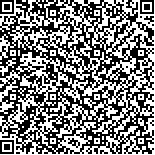| 引用本文: | 房海,陈翠珍,张晓君,葛慕湘,何振平,靳晓敏,王秀云.牙鲆(Paralichthys olivaceus)细菌败血感染症及病原检验与分析.海洋与湖沼,2005,36(2):159-166. |
| |
|
| |
|
|
| 本文已被:浏览 2274次 下载 1499次 |

码上扫一扫! |
|
|
| 牙鲆(Paralichthys olivaceus)细菌败血感染症及病原检验与分析 |
|
房海, 陈翠珍, 张晓君, 葛慕湘, 何振平, 靳晓敏, 王秀云
|
|
河北科技师范学院动物科学系 秦皇岛066600
|
|
| 摘要: |
| 采用调查统计、剖检病变、病原分离鉴定与人工感染健康鱼致病作用试验的方法,对自然发生的养殖牙鲆细菌败血感染症病例,进行了发病情况、临床表现及病理变化等方面的检验,同时取病(死)牙鲆的肝、腹水、腐烂肌肉组织为材料进行细菌分离,对分离于10尾鱼20株纯培养菌的形态特征、理化特性等进行鉴定。结果表明,分离出来的两种细菌,一种是弧菌属(Vibrio Pacini 1854)细菌的一个新种 (sp. nov.)并定名为牙鲆弧菌 (Vibrio olivaceus sp. Nov.);另一种是气单胞菌属(Aeromonas Kluyver and van Niel 1936)的嗜水气单胞菌(A. hydrophila)。通过人工感染试验等表明该两种分离菌为相应感染症的致病菌。 |
| 关键词: 牙鲆 败血感染症 病原细菌 检验 |
| DOI: |
| 分类号: |
| 基金项目:河北省科技厅科技攻关项目 ,02220502D号 |
附件 |
|
| EXAMINATION AND ANALYSIS OF BACTERIAL SEPTICAEMIA AND PATHOGEN IN BASTARD HALIBUT (PARALICHTHYS OLIVACEUS L.) |
|
FANG Hai, CHEN Cui-Zhen, ZHANG Xiao-Jun, GE Mu-Xiang, HE Zhen-Ping, JING Xiao-Min, WANG Xiu-Yun
|
|
Department of Animal Science, Hebei Normal University of Science and Technology, Qinhuangdao, 066600
|
| Abstract: |
| Bastard halibut (Paralichthys olivaceus Temminck et Schlegel) is a marine fish with high economic value in northern China. Diseases, their numbers and types of bacterial pathogens have been well documented, such as vibriosis, edwardsiellosis, flexibacteriosis, nocardiosis, pasteurellosis. In September 2001, we conducted exam-i nation of bacterial septicaemia in bastard halibut. The results showed that the diseases were infected by two species of bacteria, one new species of Vibrio was identified based on its extensive phenotypic characters, and another was regarded as Aeromonas hydrophila. In this paper, isolation and biology of these bacteria were reported.
Continuous and high mortalities occurred in cultured bastard halibut in September 2001. Symptoms of naturally suffered fish include loss of appetite or stopped eating, slow moving, and floating up. Pathological examinations on 10 moribund and newly dead fish exhibited petechial haemorrhages on the abdomen, rotten muscles in the base of dorsal fin, abdomen swelling with whitish ascitic fluid, and anal pop-out, swollen and congested liver, kidney and spleen.
Two colonies were obtained for kidney, liver, spleen and ascitic fluid of 10 examined moribund fishes after being inoculated with nutrient agar and blood nutrient agar at 28°C for 24h. In nutrient agar, colony A were round, smooth, with clear outline, slightly convex, sem-i transparent to obscured, pale grayish-white colonies. The size was about 0.8mm in diameter after 24h; 1.2mm in diameter after 48h, in moderate growth rate. Colony B were round, smooth, with clear outline, slightly convex, whitish to grayish-white colonies, with the size about 1.2mm in diameter after 24h, 2.0mm in diameter after 48h, in high growth rate. In blood nutrient agar, group A were creamcoloured shiny colonies, around 1.0mm in diameter after 24h, 1.2mm in diameter after 48h, in moderate growth rate, no-haemolysis. Other traits corresponded to that of in the nutrient agar. Group B approximately 1.2mm in diameter after 24h, 2.0mm in diameter after 48h, with β-haemolysis, in high growth rate. Traditional classification was used to identify the above isolated bacteria, and get extensive phenotypic information of A and B pure cultures including morphological, physiological and biochemical characteristics, and mol% G+ C ratio of the DNA for representative strain. Results show that morphological characteristics of 10 strains (A) were consistent, Gram-negative, rod-shaped or spherical, no-endospores, singly or in pairs, (0.6–1.0) μm×(0.9–2.0) μm in size. Morphological traits were identical at 37°C or in 28°C, in array of spherical cells or in irregularly short chains of three to eight cells. In addition, negatively stained electron micrograph revealed that the examined strain was rod-shaped, no flagella, few slightly curved. The characteristics of 10 strains (B) were identical at 37°C or in 28°C, Gram-negative, rod-shaped, singly or in pairs, no-endospores, rounded ends, (0.4–0.6) μm×(1.0–2.2) μm in size. The results of physiological and biochemical traits show that Group A have positive reaction to oxidase, catalase, B-galactosidase, nitrate reduction, acid but no gas released from glucose, and negat ive reaction to citrate ut-i lizat ion, gelat in hydrolysis, methyl red, Voges-Proskauer react ion, sucrose reduction, inositol, sorbitol, rhamnose and arabinose, sensitive to vibriostatic agent O/129. The Group B have positive reaction to oxidase, catalase, gelatin hydrolysis, indole, methyl red, esculin, sucrose, trehalose, maltose, D-mannitol, arabinose, acid and gas released from glucose, nitrate reduced, H2S generated, and negative reaction to urease, Voges-Proskauer reaction, D-sorbitol, adonitol, D-arabitol, i-erythritol, m-inositol, L-rhamnose, salicin, with motility, and resistant to vibriostatic agent O/129. The test was conducted on two isolates of pathogenicity by experimental infection. Occurrence of disease and death of fish were observed after the infection, and the pathogenicity of the isolates was determined by duplicating the same infections as natural outbreaks and reisolated the bacteria which were used in experimental infection. The livers from the infected dead exhibited syndromes of swollen and congested internal organs, with petetrial necrosis, and swollen abdomen filled with ascitic fluid. The smears of liver from the dead were examined by Gram-stained Results show that a lot of Gram-negative rods occurred, which is consistent with that of the natural infected cases. In addition, the representative strains were reisolated when the sample of liver from the infected dead were inoculated on nutrient agar and blood nutrient agar (contain 7% rabbit blood) at 28°C. The phenotypic characteristics of the reisolated ones were comparable to the description above. The representative strains were re-checked by CCTCC, and a consistent result was presented. One was regarded as a new species of Vibrio and was designated as V. olivaceus sp.nov. from isolated fish (P. olivaceus) fo-l lowing International Code of Nomenclature of Bacteria (ICNS). Another was identified as A. hydrophila. |
| Key words: Bastard halibut (Paralichthys olivaceus L.), Septicaemic infect ion, Pathogenic bacteria, Examination |
|
|
|
|
|
